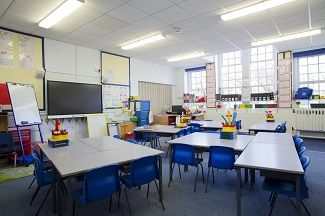2 Studies Show Experience and Blueprint for School Openings
An understanding of what one country saw earlier this year and the prospect of what other countries can do for future openings.

Two new studies show both data from past experience and modeling data as a potential blueprint for in-classroom learning during the coronavirus 2019 (COVID-19) pandemic.
The 2 studies were published in The Lancet.
For the former, a study from New South Wales (NSW), Australia found low levels of transmissions in 25 schools and nurseries from January through April of this year.
They did an observational study which saw 12 children and 15 adults who were in the school or nursery while infectious. There were 633 close contacts who were tested following symptoms. Of those, only an additional 18 people became infected with COVID-19. This comes from a total of 1448 contacts, which is a secondary attack rate of 1.2%.
“In a subset of 7 schools and nurseries that underwent additional investigations including antibody testing, symptom surveys and extra nucleic acid testing for the virus, the child-to-child transmission rate was found to be 0.3%, and 1.0% for child-to-staff," the investigators wrote. “The rate of staff-to-child transmission was 1.5% and staff-to-staff was 4.4%, suggesting that children are less likely than adults to spread the virus.”
There are 1.8 million children in New South Wales and the study found 98 children were infected with COVID-19. This was a total of 3.2% of COVID-19 infections, confirming low rates of disease in this age group, according to the investigators.
“The study adds valuable data but it is important to view these findings in the context of the NSW outbreak," coauthor Professor Kristine Macartney, director of the National Center for Immunization Research and Surveillance and the University of Sydney, said. “It may be that higher rates of transmission occur in areas with higher levels of infection and where contact tracing and public health measures were not as rigorous as in Australia, where borders were closed and quarantine measures were strongly enforced. Schools were also closed temporarily for thorough cleaning if a pupil or staff member was found to be infected.”
Looking at a blueprint for potentially moving forward to have students attend school, a study was done looking at modeling in the UK.
The study suggests that a second COVID-19 wave could be avoided in the UK, if accompanied by a test—trace–isolate program with sufficiently broad coverage.
This would have to include increased levels of testing—between 59% and 87% of symptomatic people tested at some point during an active infection—and effective contact tracing and isolation.
For effective contact tracing and isolation, they assumed 68% of contacts could be traced, and 75% of individuals with symptomatic infection would need to be diagnosed and isolated if schools return full-time in September—or 65% if a part-time system were used. If only 40% of contacts could be traced, these figures would need to increase to 87% and 75%, respectively.
However, the investigators said that if levels of diagnoses and contact tracing fall below this across the UK population, reopening of schools together with gradual relaxing of the lockdown measures are likely to result in a secondary wave.
“Our modelling suggests that with a highly effective test and trace strategy in place across the UK, it is possible for schools to reopen safely in September,” Jasmina Panovska-Griffiths, DPhil, UCL/Oxford, who lead the study, commented. “However, without sufficient coverage of a test-trace-isolate strategy the UK risks a serious second epidemic peak either in December or February. Therefore, we urge the government to ensure that test-trace-isolate capacity is scaled up to a sufficient level before schools reopen.”
